Ads and Rankings: How Many Ads is Too Many Ads for SEO?
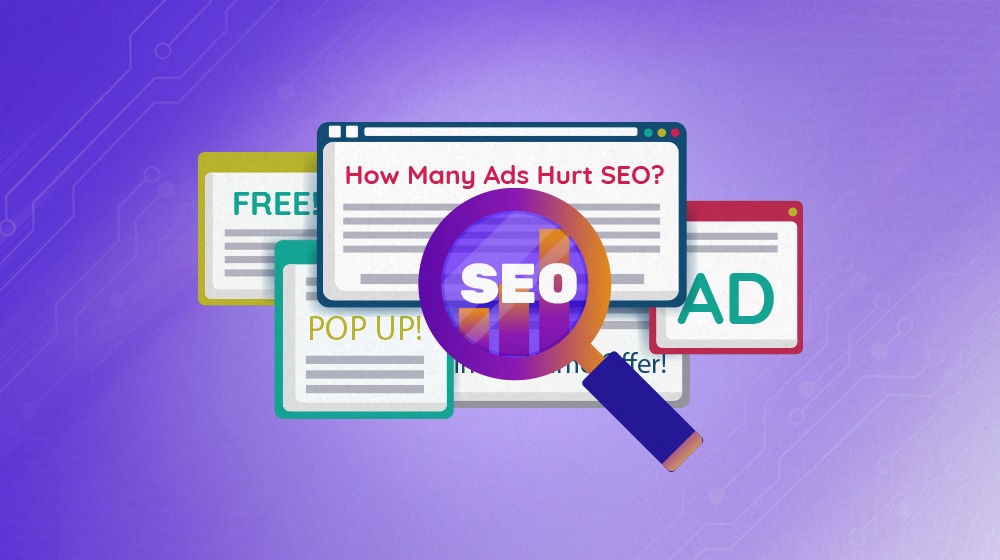
Ads are, and have been for years, a sad fact of life for internet users. Whether it's browsing Facebook or Twitter/X and scrolling past every third post with a sponsored tag, opening up a resource you want to read and ignoring the banners blinking at the top and mid-content, or scrolling through on your phone desperately hoping to find the one paragraph of content in between multiple ads, well. You know the story.
Ads are a contentious issue. On one hand, they're one of the easiest – not the best, but the easiest – ways to make money from a website. There are plenty of ad networks that cater to sites with relatively low traffic, and often, they make up for it with volume.
On the other hand, ads are frequently disruptive, they can shift page elements around and hurt core web vitals, they can detract from the content on the page, and, in a surprisingly common case, they can be vectors for malicious code.
It's no wonder that more and more people are using ad blockers, that some browsers are building ad blocking into their code directly, and that Google is caught in the middle.
Google's Tricky Position
Google is in a very difficult position. They're caught between a rock and a hard place, and both the rock and the hard place are branches of Google.
On one hand, you have Google Ads, one of the largest, easiest to use, and most prominent ad networks in the world. It's no stretch to say that Google is dominant in the ads marketplace and that it's a significant, if not majority, chunk of their profitability. Even back in 2021, it was a $150 billion enterprise.
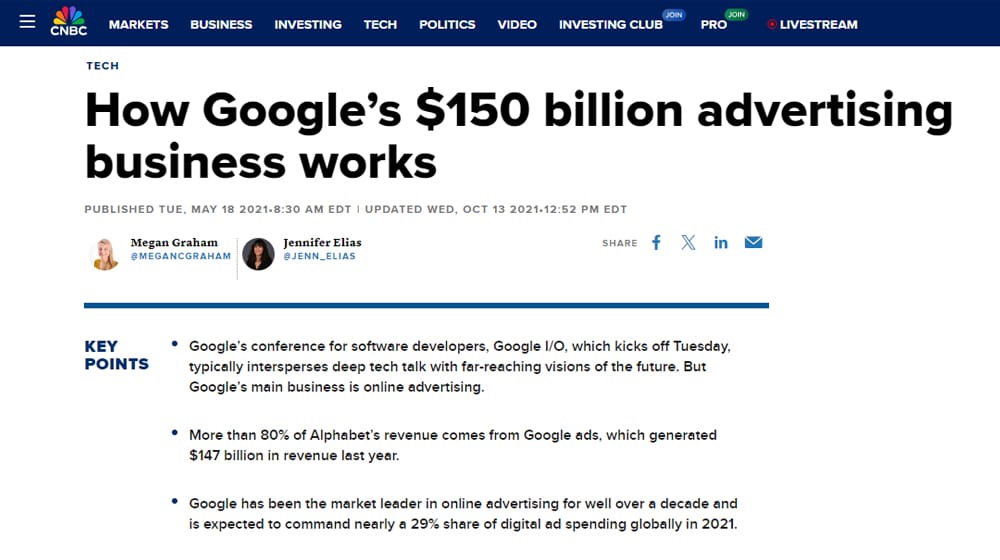
On another hand, you have Google Chrome, their browser built into ChromeOS, installed on every Android device, and widely used around the world on PCs. Chrome has been caught in this difficult situation, because millions upon millions of people use it, and they don't want to alienate their audience, but they also don't really like the fact that ad blockers can run on Chrome and block the ads that make their company money.
You may have caught wind of the uproar, then, as Chrome has been pushing to make a change that makes blocking ads harder, while also being forced to delay that change over and over because of the uproar.
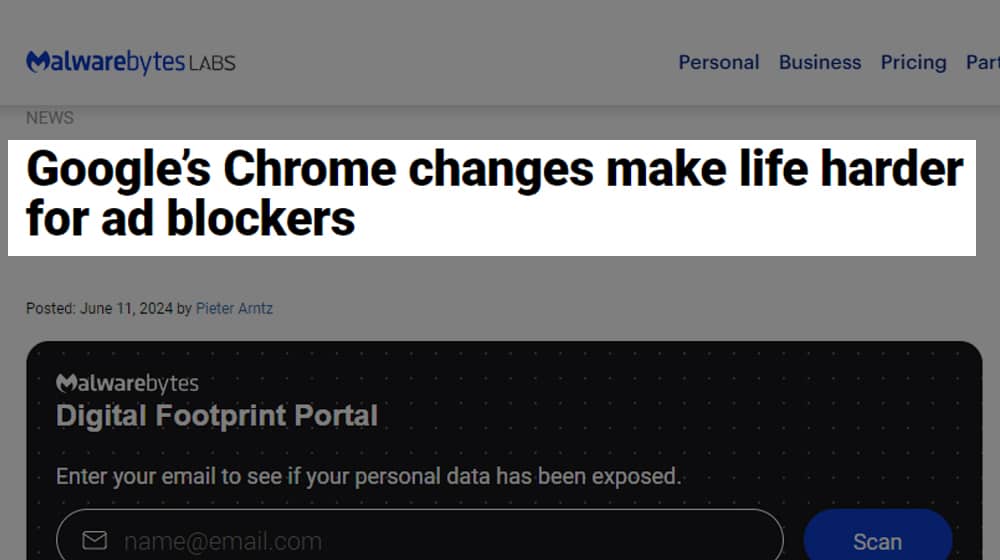
And on yet another hand, you have Google Search, the core of Google's original business and still a massive enterprise, ranking content and serving it to people alongside a platter of ads and hoping to keep people around long enough to feed money into the overall ecosystem.
It's no stretch to say that Google is a monopoly – a federal judge declared it – and it's also no stretch to say they got themselves into this position because of it.
So, why do we care, down here in the trenches, far away from the movers and shakers in Google who decide the fates of our lives by algorithmic whim? We have to live in this world, and we have to adapt to those algorithms and decisions, and that means we have to know what's going on.
Living in the Advertiser's World
When you're running a website, you need to pay to keep it going. At a bare minimum, that means paying for a domain name and for web hosting. The larger a site gets, the more that might mean paying for things like:
- Custom high-quality content from an excellent marketing agency like Content Powered.
- Custom images and graphic design to augment every post.
- Custom plugins and code to give your site additional features and help it stand out.
- R&D for products and services you might want to develop.
- Added consulting, security, or other features.
How do you pay for all of it? Well, maybe you have a day job, and you bankroll it out of your own pocketbook. Maybe you have a product or service you can sell, or you have a reputation you can leverage to sell consulting or other services.
Of course, as I mentioned at the start, display ads are the easiest option. When all you have to do is put a few lines of code on your site and start making money, and you don't have to bother with customers or services or development, it's pretty tempting.
The problem is the arms race.
The advertising arms race is the constant fight between ads, ad blockers, and the people caught in the middle. People don't like ads, and more importantly, people start to ignore ads. Sophisticated users use blockers to keep from even seeing ads. That makes your ads less effective.

To counteract less effective ads, you really don't have a lot of options. You need to either increase the value of ads (which is hard when the people who would be clicking them are leaving) or increase the number of ads. Some people try underhanded tricks like hiding ads in a way that keeps them making money, but that can get them banned from the ad platforms; others try to make them even more intrusive or otherwise invasive, and that causes problems as well.
Mobile internet is especially bad about this, both because a mobile device has a much more limited amount of screen real estate to display ads and because it's harder to use ad blockers on a mobile device, especially if you aren't as sophisticated a user of these devices.
The Push and Pull of Ads and SEO
All of this leads us to the main discussion: how do ads affect your SEO?
What you might assume happens is that more ads make for a site that fewer people want to visit, which makes the site less valuable and causes it to drop in the search rankings. But is that actually true? After all, ads wouldn't be that big of a problem if the sites coated in them weren't at the top of the rankings.
As I mentioned above, Google doesn't necessarily want to suppress the use of ads because those ads are how they make money.
So, do ads impact your SEO? If so, is there a guideline or a rule of thumb you can follow to stay on the "good side" of ads? Or is it a Wild West where anything goes, as long as you can keep users around?
First, let's talk about what Google says about ads. This is something I've discussed before: ad density rules.
Google does not have hard and fast rules about the number of ads on a page, their type, or their source. As long as those ads aren't illegal or malicious, their main guideline is simply about ad density. Here's what they have to say directly.
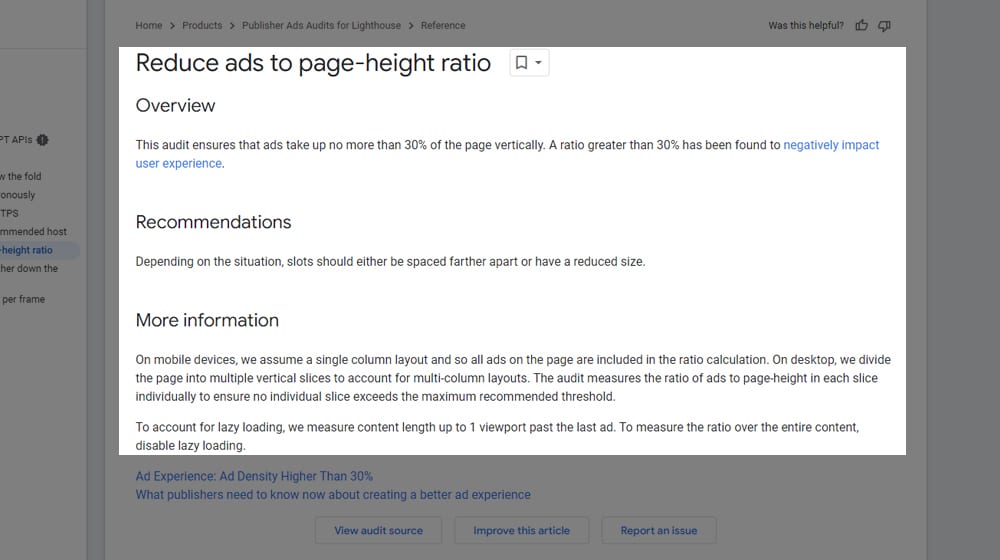
Google is part of the Coalition for Better Ads, a group of companies focusing on imposing guidelines on how advertising is used to make the web, well, usable. You can bet that if a publisher could get away with ten unskippable ads before content and still force you to go through it because the alternatives were worse, they'd do so immediately (and YouTube certainly feels like it sometimes). But, ostensibly, the rule is an ad density of no higher than 30%.
You can read more about their determination of 30% as a rule here.
30% is still a little under a third of the content on a page, and that's still a lot! But that's what companies like Google, Microsoft, and others in the Coalition have determined is the maximum allowable density.
So, there's our answer, right? How many ads is too many ads? More than 30% of the content on your page. Easy, done, next question.
Putting Ads in Context
There are two big problems with this 30% rule.
The first is that it doesn't consider the kinds of ads being shown. Ads that slide in and cover up content are a lot more disruptive than ads sitting between paragraphs you can scroll right past.
The second is that it's all a lot trickier to classify.
Consider a site with exceptionally good content. It's the only place on the internet where you can find that content. But that site has a 60% ad density. Will Google penalize that site in search?
Maybe, but also, maybe not. Even if a site gets a huge hit to SEO, if it's the only place to find that information, it's still going to top the rankings.
An example I use a lot is this image.
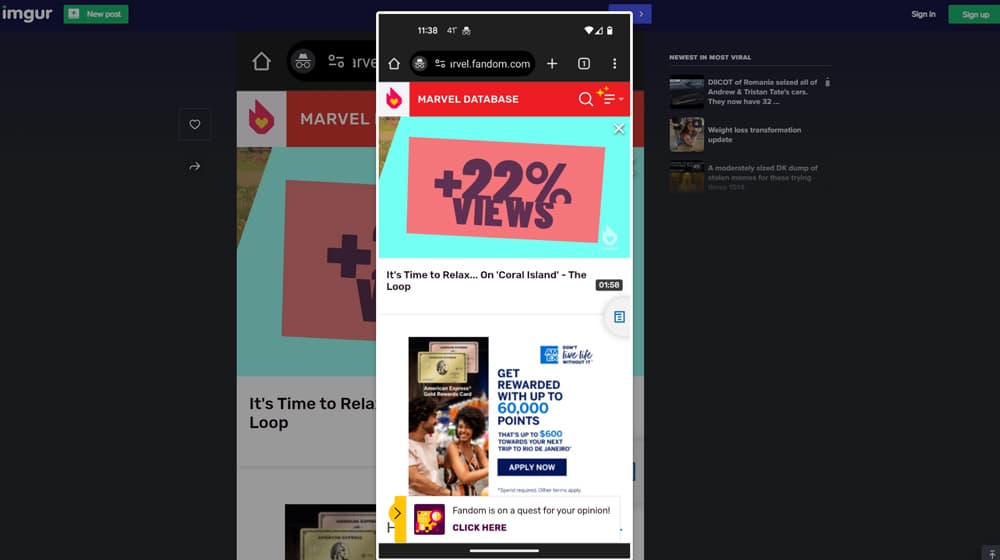
This is a screenshot of one of the largest and most popular Wikipedia-style websites out there that isn't Wikipedia itself: the Fandom Wiki. That viewport has a 100% ad density. 99% if you're being generous. There are ads on top of ads, and there's no content to be seen. Yet that domain is consistently in the top search results for queries related to that kind of information because it's the only source of it.
More and more niche fan communities are moving away from Fandom, specifically because of this issue, so hopefully it will be a self-solving problem eventually.
Cascading Influence from Ad Experiences
One of the issues here is that the 30% density rule is just one part of the overall equation. Google has well over 200 different factors they consider when evaluating a website. A site with high enough quality – or scarce enough – information can still rank highly even if a bunch of those factors are substandard.
A variety of factors caused by ads can hinder a site even if you're under the 30% ad density rule. Think about:
- Ads that are immensely disruptive to the user experience, like those playing audio.
- Ads that are poorly rendered and slow down your page's loading times or mess with core web vitals.
- Ads that are inappropriate for the content, are adult content, or are otherwise not good for your page.
- Ads that serve malware, which can reflect poorly on your site and get you flagged as a malware host.
- Ads that too closely mimic content or are otherwise formatted to be exploitive of user behavior for unnatural clicks.
Any of these can get your site in trouble and hurt your SEO or even earn you a manual penalty, even if you are well under the 30% ad density threshold.

And, of course, the opposite is also true. A site that has enough power from SEO due to other factors can, more or less, freely break the density rules without issue. It would take a lot of abuse to nuke a significant domain, after all.
That's not to say it can't happen. The recent Helpful Content Update, for example, seemed to hurt a lot of sites running ads from Mediavine. In a case study performed after the update, which I talk about in greater detail here, most websites using Mediavine as their ad network (which is somewhat notorious for having much higher ad density than normal and a lot of ads with a poor user experience) were hammered and lost 66% or more of their traffic.
How to Survive and Thrive
What's the takeaway here?
Ads are, distressingly, a critical part of the internet. I don't think we're going to be moving away from them any time soon. However, I suspect that there will be an increasing push over the next decade for sites that want to minimize or remove advertising in favor of other sources of monetization. Some already do, with memberships, paywalls, and stores.
If you need to run display ads, I recommend keeping a close eye on them. Make them as minimally disruptive as you can, run as few as you can get away with, and focus on making them as relevant and as high-quality as possible. The worse they are, the worse they'll perform, and the more you'll need to make up for it, and then you've fallen into the same trap as so many other sites.

Second, if you can find an alternative means of monetizing and use it to get rid of ads, do it. Sell consulting. Develop a product or a service you can monetize. Fund your site with a day job. Contribute to the better internet you want to see.
Finally, don't stagnate. There's a reason I haven't said how many ads is too many: there are no hard and fast rules. Adapt and change to the pressures of your audience and your competition. It's all any of us can do.




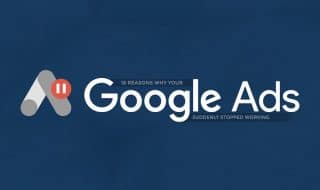

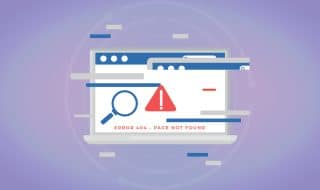



Comments